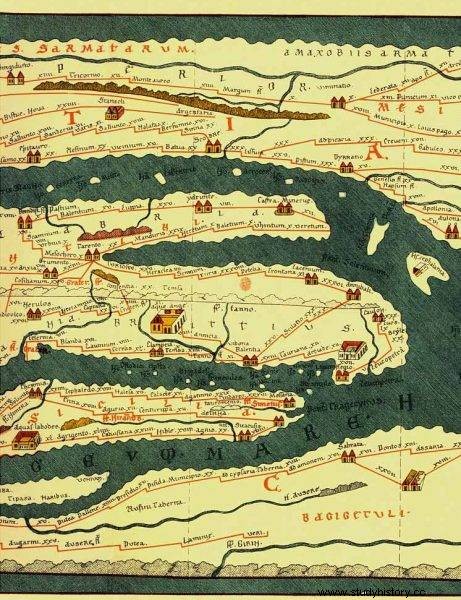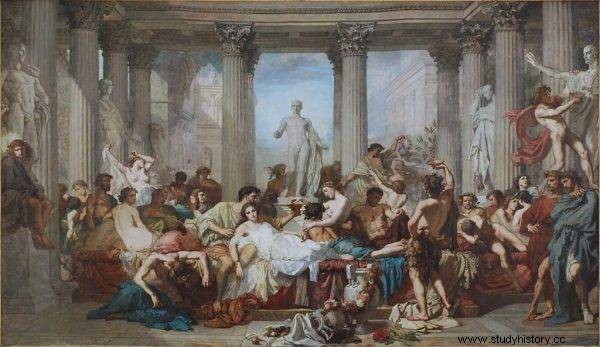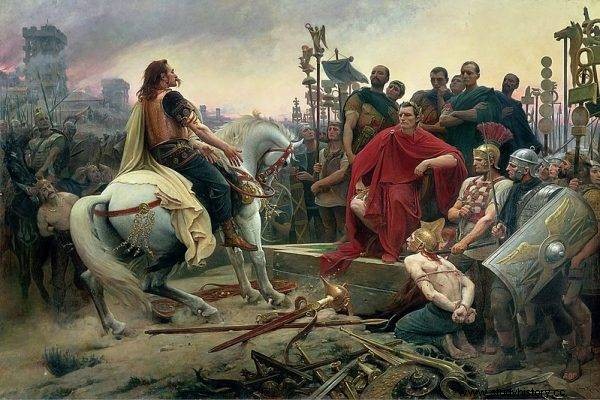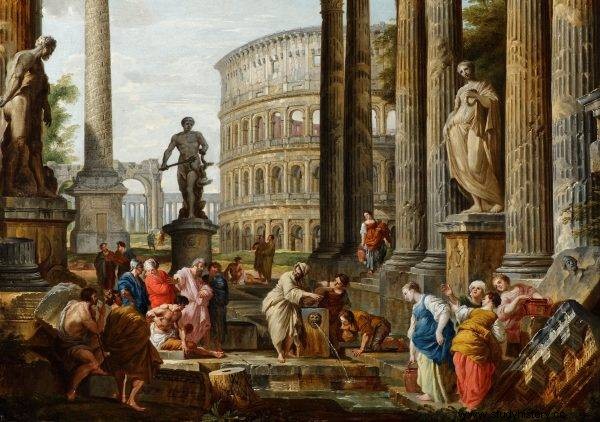It is customary to consider that the capital of the Roman Empire was Rome. But in reality it was completely different! How many ancient cities had this honorable status?
“Never until today has any country achieved such size and durability. Compared to them, the splendor of the Greek states seems to be insignificant… ”- wrote Appian of Alexandria in the middle of the 2nd century. This Greek, originally from Hellenistic Egypt, must have been in fact impressed by the might of the Roman Empire if he was so diminishing the achievements of his ancestors.
Indeed, the size of the world's antiquity was unimaginable to modern people . It is assumed that during the reign of Emperor Trajan, when the Roman Empire reached the apogee of its territorial range, the length of its borders was almost 10,000 meters. km. The empire stretched from the shores of the Persian Gulf to northern Morocco , from the coast of Egypt to central Scotland. And although in later years this area gradually decreased, ruling it was still quite a challenge.
Roman roads
It would not be possible to rule over such a large country if it were not for the efficient communication provided by the road network. They were undoubtedly one of the greatest engineering achievements of the Romans. To this day, they remain a symbol of their genius. One of the researchers of the topic, Alberto Angela, even emphasizes that:"Without roads, the first globalization in the history of the world, by the Romans, would have failed."

It would not be possible to rule over such a large country if it were not for the efficient communication provided by the road network.
The created network allowed for easier movement of the legions, facilitated trade and allowed for faster transfer of information. It also allowed for the dissemination of ideas, artistic trends as well as philosophical and religious views. After all, the roads were also a way to emphasize Rome's authority as a city to which these vital arteries were meant to lead. But is it just for him?
Role blur
During the royal, republican and early empire periods, Rome was indeed the undisputed capital of the state and the center of the ancient world . It was here that decisions about war and peace were made. It was in Rome that kings, senators and finally the first emperors decided whether or not to be conquered lands and nations.
However, the situation changed significantly with the death of Emperor Alexander Severus in 235 CE. The lack of clearly defined rules for the succession of imperial dignity meant that most of his successors came to power through military coups. Their rule usually lasted only a few months, and then they died at the hands of disgruntled soldiers - and so on. It is estimated that in 235–284, more than 20 usurpers and pretenders to power appeared. However, 26 were officially declared worthy of the imperial title.

It is assumed that in 235–284, more than 20 usurpers and pretenders to power appeared.
In this situation, the capital, so far , began to lose the role of the political center, because the so-called military emperors spent most of their time in the provinces where they were called. In addition, the state of boiling on the borders of the empire invaded from the east by the Persian Sassanid state and from the north by the Germanic tribes forced them to stay in the endangered sections. Probably the influence of the urban aristocracy on the government and the watchful eye of the still important senate meant that legion emperors, unaccustomed to such ruling, preferred to stay away from the city on the Tiber. Thus, its role as the capital of the state was blurred in the flood of other cities, or rather military camps aspiring to such a name due to the presence of the imperial person in them.
If not Rome, then what?
This kind of makeshift state actually lasted until the year 293, when Diocletian (moreover, also enthroned by the voices and swords of legionnaires) made radical changes in the current management of the empire. As a result of the harmonization of the provincial administration, not only Italy was deprived of its privileged position, but also the Eternal City. The nail in the coffin, however, turned out to be the introduction of the so-called tetrarchy, i.e. the division of power in the empire between two superior emperors with the title of Augustus and two rulers of a lower rank (Caesars) . Diocletian was aware of the fact that the current system of governing such a vast country - and this in view of the crisis on the borders - was no longer working. It was too much for one person.
However, while the very idea of dividing the power turned out to be quite successful, because the co-ruling quartet dealt with the problems of the state, the case of the capital was greatly complicated by it. Each ruler was generally responsible for a different territory . So one-stop governance could be inconvenient, to put it mildly.
You can choose a color
As historians note, the simplest solution, at least with regard to Augusta, would be to assign Rome a second capital of equal rank . Meanwhile, it turned out that the paths of Diocletian's empire in charge of the east and its western part, Maximian, did not lead to Rome. the role was taken over by Constantinople . Great modeled after the military castrum romanum he had a palace also in present-day Split. The creator of the tetrarchy did not disdain Antioch, Serdika (now Sofia), Thessaloniki (Thessaloniki) and Sirmium (Sremska Mitrovica), which even achieved the status of one of the main capitals of the state.

The role of Rome as the capital of the state blurred in the flood of other cities, or rather military camps aspiring to such a name due to the presence of an imperial person in them.
On the other hand, Maximian considered the best location first Trier, and after it was handed over to his Caesar, Constantius I Aquila, and then Milan "A city close enough to the strategic state borders on the Rhine and Danube, and quite far from Roman influence," stresses researcher Matthew Bunson. From that time until the beginning of the 5th century, successive Western emperors built their residences here.
Is this still the Roman Empire?
Everyone avoided the Eternal City, which, as a result of the later tetrarchs' struggles for power, definitely lost its role as the capital city. And the unsuccessful attempt to revive his glory during the reign of his son Maximian Maxentius in the years 306–312 only seemed to confirm this. The collapse of the Diocletian system of government did not change anything in this matter, because its victorious beneficiary Constantine I did not intend to rule over the Tiber, but over the Bosphorus. This did not mean, however, that his successors were fully convinced of Constantinople, which until the reign of Theodosius I in 379 shared the status of the capital of the eastern part of the empire with Antioch.

Rome was not the only capital of the Empire.
In trouble - Ravenna!
After Theodosius' death in 395, his son Honorius, who ruled the West, did not think about returning to Rome either. Initially, he settled in Milan. However, in view of the increasing threat from the Visigoths the emperor decided in 402 to move the capital to Ravenna on the north-eastern coast of Italy . This conveniently located port of the Roman fleet (from the time of Octavian Augustus), surrounded by massive walls, turned out to be an impregnable fortress.
After all, it was Ravenna, not the Eternal City that witnessed the fall of the Western Empire in AD 476. And only the Visigoths and the Vandals, who plundered the city on the Tiber, seemed to remember the former grandeur of the ancient capital of the Roman Empire. For them all roads still led to Rome.
